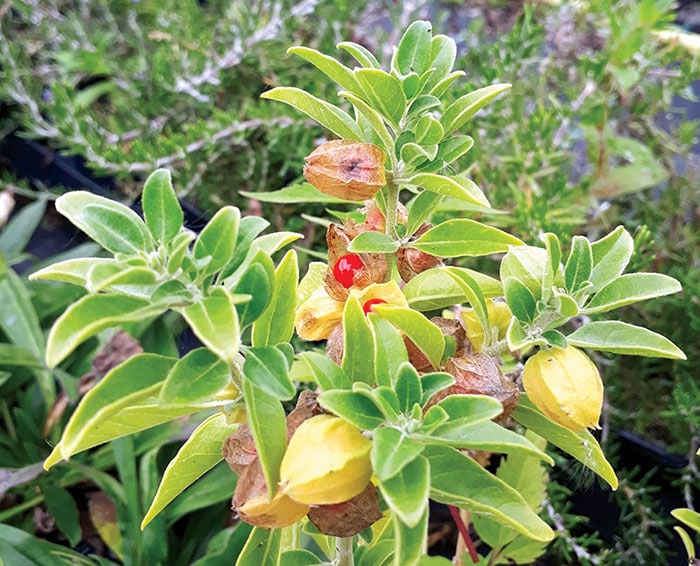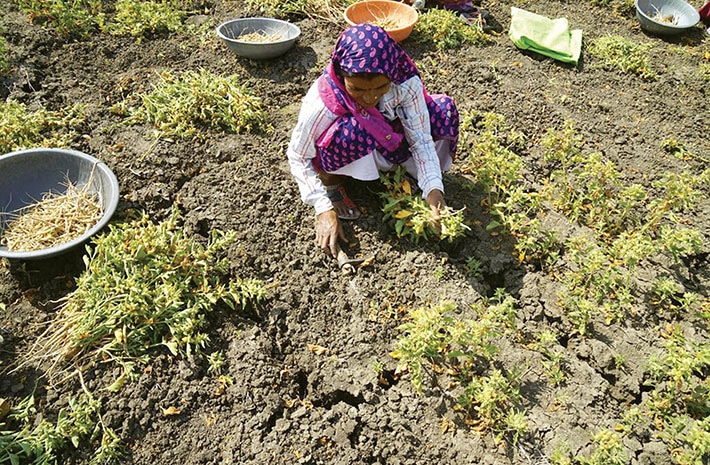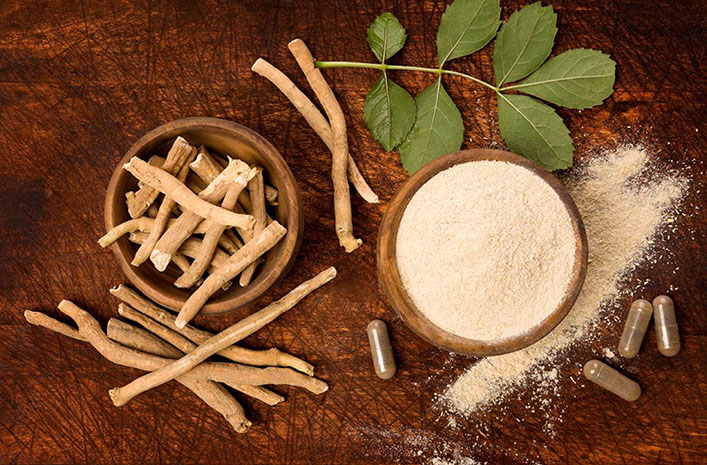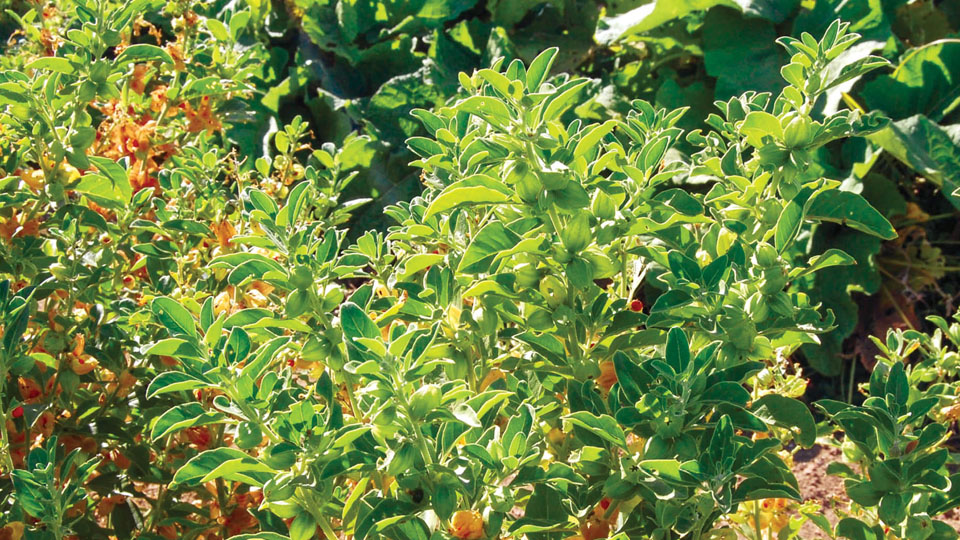Text & photographs by Dr. Mahadeswara Swamy, Scientist
In the current Corona pandemic situation, herbal concoction are gaining importance as more and more practitioners of herbal medicine are prescribing them for boosting immunity and to keep mental health in good condition. Usage of herbs and spices for enhancing immunity and to suppress mental depression are not new. Among these, ‘Ashwagandha’ finds its importance as a household remedy, especially its root powder as the best nerve tonic for old people and children and aphrodisiac for the young. It has been a prized top notch adaptogenic (to resist all kinds of stress) tonic for centuries in India. It is also known as Indian Ginseng as it compares well with Siberian and Panax Ginseng in its stress-relieving properties. Even the Ministry of Health has recommended ‘Ashwagandha’ to strengthen the immune system and mental well-being of patients recovered from Corona illness as one of the AYUSH medicines.
The name ‘Ashwagandha’ is derived from Sanskrit word ‘Ashva,’ meaning horse and ‘gandh’ denoting smell referring to the horse-like odour emanating from its root. Its scientific name is Withania somnifera, a plant in the Solanaceae (Tomato family). Withania is named after Henry Witham, an English palaeobotanist of the early 19th century. The species name somnifera denotes “sleep-inducing” in Latin.

Common names
English: Indian Ginseng, Ayurvedic Ginseng, Poison gooseberry or Winter Cherry; Kannada: Angara beru/ gadde, Hiremaddina gida, Kanchuki; Hindhi: Asgandh, Ashwagandha, Kachchhi; Malayalam: Amukkuram; Tamil: Amukkira, Amukkilaachedi, Karappaan thazhai; Telugu: Ashwagandha, Vajigandha.
‘Ashwagandha’ is a short and tender suffruticose shrub (woody and perennial at the base but remaining herbaceous above) with ascending branches extending radially from a central stem. Shoots are stellate-tomentose (star-shaped hairs densely matted). Leaves are dull green, 4-5 inches long; elliptic-ovate to broadly ovate, acute; margin entire to repand (slightly undulating).
Leaves have a smell of green tomatoes. Flowers greenish-yellow inconspicuous, sessile to subsessile, in clusters of 2-5 appearing at the leaf nodes. Sepals papery, spherical or urn-shaped, stellately hairy and persistent. Corolla (petals) lobes, tomentose on the outside, light yellow to yellow-green, 5-lobed, triangular. Stamens 5, yellow-orange. Ovary, bicarpellary, syncarpous, bilocular, superior with axile placentation. Fruit is a berry, globose, orange-red; The roots are straight, cylindrical, tapering down; brownish outer and creamy interior; fleshy when dry; acrid and bitter.

Cultivation and harvest
It is propagated by seeds. Sow the seeds 2 cm deep and 10 cm apart during dry season (October to March). They germinate in two weeks. Water regularly during this period. After a month, weed out weak plants to ensure a spacing of 50 to 60 cm between plants. Water sparingly. It does not tolerate water stagnation. The plants complete their life cycle (flowers and berries) in 5 to 6 months.
Harvest roots after berries ripen and leaves begin to dry out. Take out roots by digging carefully to ensure roots are not damaged. Wash and clean the harvested roots and cut into small pieces of 7-10 cm. Dry under sun or shade.

Useful tips
- A few species in the genus Withania are morphologically similar to Ashwagandha. For example, Physalis alkekengi which is also known as winter cherry.
- Do not confuse Ashwagandha with blue cohosh, canaigre, codonopsis, ginseng American, ginseng panax or eleuthero.
- It is a drought-resistant plant cultivated as an annual plant in spring and summer requiring sun to partial shade conditions. It prefers dry and well-drained, neutral to slightly alkaline soil.
- The plant is prone to several pests like treehopper, carmine red spider mite and diseases like Leaf spot resulting in reduced secondary metabolites production.
- Plant can be propagated from greenwood cuttings.
Medicinal uses
- The available scientific data support the fact that it is a potent regenerative tonic with multiple pharmacological actions: anti-stress, neuroprotective, anti-inflammatory, antioxidant, immune modulatory and antitumor.
- It is used in the prevention and treatment of stress, anxiety, memory loss, amnesia, dementia, impotency and other diseases like Parkinson, arthritis, cancer, cardiovascular diseases.
- The root and berry are commonly used in the preparation of Ayurvedic drugs though bark, leaves, seeds are also used in Folklore medicine.
- The alkaloids ‘withanine’ and ‘somniferine’ present in the plant are the main bioactive compounds responsible for pharmacological actions although it is reported to contain innumerable phytochemical constituents (around 40 withanolides, 12 alkaloids and many sitoindosides.
- Drugs of various brands are available in market in the form of capsules, powders and liquid extract.
- Hair Care: According to a reference, when used in shampoos, it is believed to help improve scalp blood circulation, strengthen hair & get rid of dandruff.
Precautions
- Large doses of Ashwagandha might cause stomach upset, diarrhea and vomiting.
- Those who have diabetes, BP, stomach ulcers, thyroid disorders, Rheumatoid Arthritis, must consult an Ayurvedic doctor before taking Ashwagandha.
- Patients with “Auto-immune diseases” such as Multiple Sclerosis (MS), lupus (Systemic Lupus Erythematosus (SLE) or other conditions need to avoid using Ashwagandha.
- Stop taking Ashwagandha at least 2 weeks before a scheduled surgery.
- Stay on safe side by avoiding its usage during pregnancy and breast-feeding.
- Consult an Ayurvedic doctor for its regular usage.
Mob: 97429-91057 e-mail: [email protected]








Recent Comments